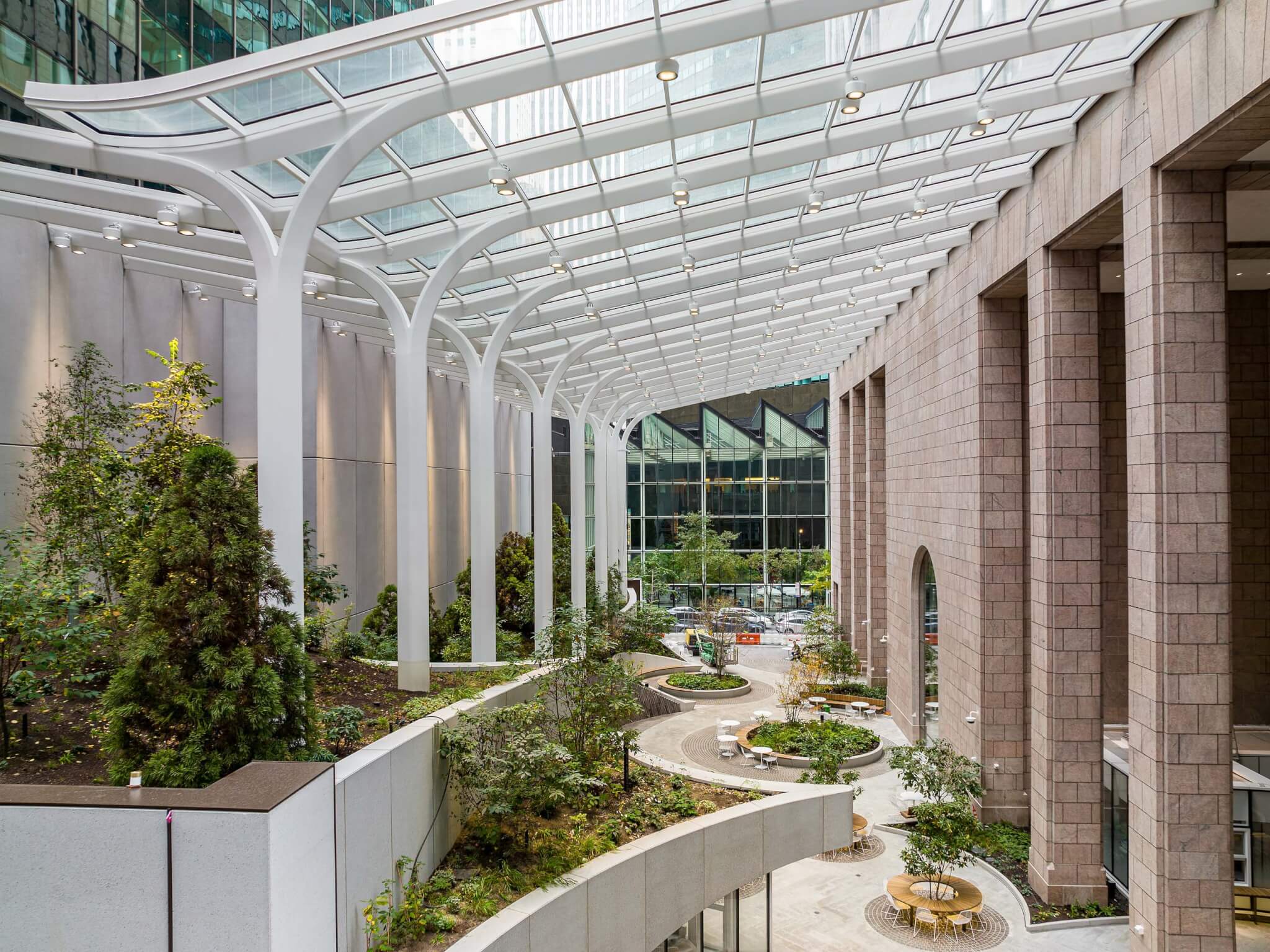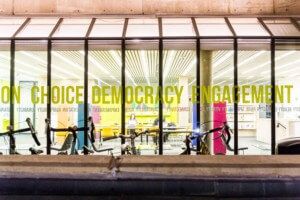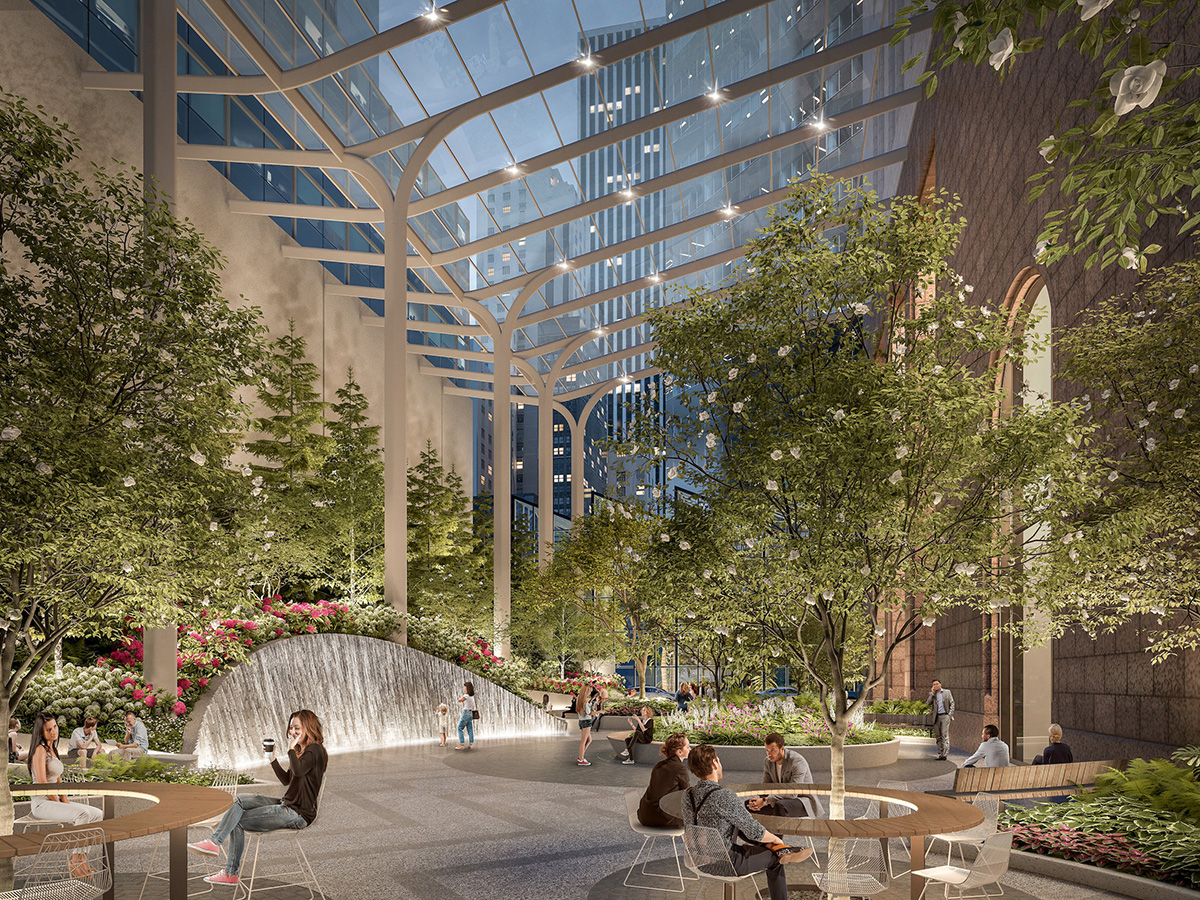[ The AN editorial team is on hand for Zoning the City conference, now in progress at the McGraw-Hill Conference Center in Manhattan. We’ll be live blogging and tweeting @archpaper with hashtag #zoningthecity throughout the day, so check back and follow us on twitter for updates! ]
6:00 p.m.
In a wrap-up conversation moderated by Kayden, a panel brought together Thom Mayne, A.M. Stern, and Mary Ann Tighe to investigate a few non-planning factors, though of course it rounded back to planning within moments. The exchange was peppered with A.M. Stern wit, Mayne theory, and Tighe pragmatism.
Remarking on the more than 4 billion square feet of undeveloped FAR in New York City, Stern remarked, “That’s a lot of development–even for Related!”
Tighe said that zoning remained necessary, at the very least, for developers’ peace of mind. “I think we need some boundaries,” she said. “Things that will allow capital an amount of comfort that it’ll need to move foreword.” Tighe, who heads up New York’s real estate board, provide an audience full of zoning wonks and architects an investors voice, “What we keep forgetting after the vision is that the money has to come, the as-of-right things are needed.”
Stern replied no spoon full of sugar was needed to let this medicine go down. “Architects complain, they always complain,” he said “But they do their best work with difficult clients, financial constraints.”
Mayne broke through the realm of brick and mortar. “New York is inseparable from its intellectual capital, that’s it’s certainty and predictability.”
4:45 p.m.
Matthew Carmona of University College London played to a re-caffeinated crowd, using humor to diffuse a very complex approval process for zoning London’s 32 different boroughs. With each borough weighing in with their own distinct processes and opinions, plus the mayor putting his two pence in, and even the secretary of state having a say, its amazing London plans as well as it does. The process looks more nightmarish than a West Village community board debating a university expansion. One intriguing aspect was the specificity of the Views Management Framework, which include river views, linear views, townscape views, and panoramas. But it was left to Loeb Fellow Peter Park, paraphrasing Goldberger, to best describe London’s beautiful mess. “Some of the greatest places in the world were built before zoning,” he said. “There’s an element of serendipity.”
3:20
The afternoon “Zoning the Equitable City” session was a study in contrasts. Former Newark director of planning and development Toni Griffin was matched with San Francisco planner John Rahaim. Griffin swept through a presentation on downtown Newark that pegged plans on public institution locales. With many of the smaller businesses struggling, the neighborhood anchors are the Newark Museum and Rutgers University.
By contrast, the boon and bane of Rahaim’s tenure is a mandate regulating small businesses, akin to rent regulation in New York, assuring diversity of the streetscape and helping mom-and-pops stay in business.
Still, Rahaim warned of the market manipulation aspects of the mandate and suggested only adopting it with “eyes wide open.” One member of the audience agreed, asking if SF officials could regulate whether a candy store could sell M&Ms. Rahaim responded that as there are more dogs than children in San Francisco, weeding out a few pet stores might not be a bad thing. Griffin, for one didn’t mind the notion, particularly in Newark where there’s no glut of fresh food stores. “How many more McDonald’s and chicken restaurants do I have to pass?” she asked.
1:45 p.m.
Columbia’s Vishaan Chakrabarti kicked off his pro-density talk by telling the audience that in New York, “We’re building more sprawl then we are tall, despite our best efforts.” Chakrabarti then suggested using wasted landfill dredge from New York City rivers to build even more sprawl, albeit tall sprawl. Chakrabarti presented a Columbia student project that proposed using dredged material from the river, a huge quantity of which is now being shipped off to Texas, and placing it in the harbor to protect the city from storm surges and to create a Lower Lower Manhattan—dubbed LoLo. “What could be better than Manhattan,” asked Chakrabarti, “more Manhattan.”
12:00 p.m.
Bloomberg LP’s Daniel Doctoroff gave a pumped up presentation that took a decidedly Bloomberg administration stance, and not unconvincingly. “Around the world cities are relentlessly copying New York,” he said, before issuing a warning. “In order to stay competitive, we must stay on edge, whether it’s Brooklyn Bridge Park or the Highline.” Doctoroff essentially concurred with a statement made this morning by Alex Garvin, “We had better come to terms with the fact that we’re not going to have a manufacturing base anymore.” But Doctoroff pointed to the future of manufacturing found at Brooklyn’s Navy Yard and Army Terminal: green technology, film and television, and biotech. “But you just got to be realistic of what you can and cannot do in New York City,” he said. “You can’t hold on to romantic notions.”
One speaker who held no romantic illusions was Community Solution’s Rosanne Haggerty, who bluntly reminded the crowd that planning must address the needs of the poor. “We’re making bad decisions,” she said. Haggerty urged the power-packed crowd “to close the income gap by getting more players onto the field” and reminded them that the rumbling of the London Riots and Occupy Wall Street prove: “Change doesn’t come from the elites, it rises.”
10:00 a.m.
NYC City Planning’s Zoning the City conference opened to a packed house this morning. With the mayor tied up with an Occupy Wall Street press conference on the eviction of protestors from Zuccotti Park, Planning Commissioner Amanda Burden made the opening remarks, followed by Jerold Kayden who delved into taboo topics, such as Zoning for Beauty. “Zoning is not longer about old school physical concerns,” Kayden told the audience. “Better design is commonly obtained by review.” Kayden, an acknowledged expert on Privately Owned Public Spaces (POPS) like Zuccotti Park, didn’t mention the elephant in the room. Instead, he kept to the prepared script: “To plan is human; to implement is divine.”
With the mayor a presumed no-show, preparing for a court hearing for evicting OWS, deputy mayor Bob Steel took the podium to recap the administration’s zoning accomplishments, from the two completed sections of the High Line to last week’s kick start of Hudson Yards. Steel also mentioned re-embracing the city’s “Sixth Borough,” its vast waterfront. The deputy mayor wrapped up by introducing a new initiative “Zone Green.” More on that later…










